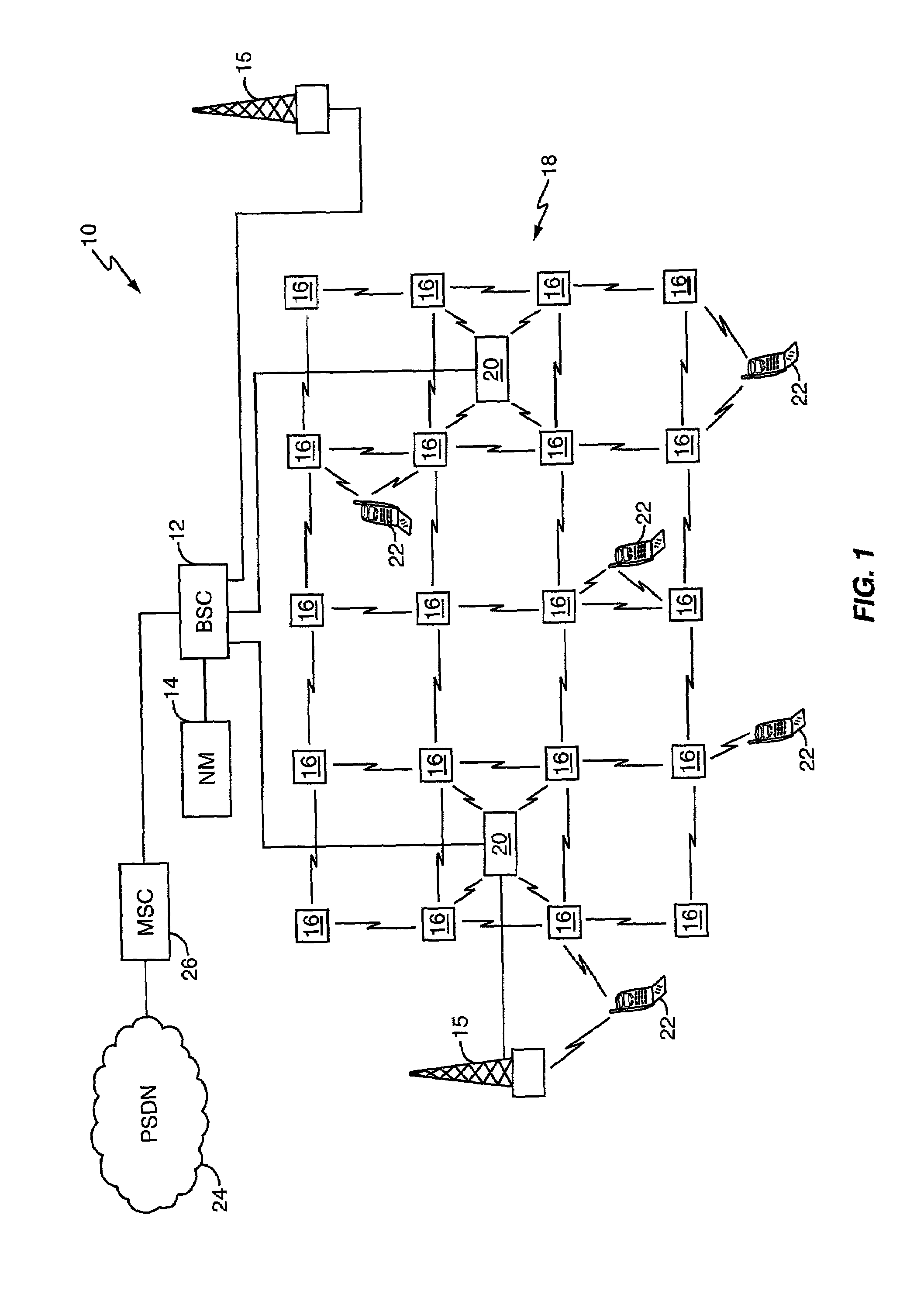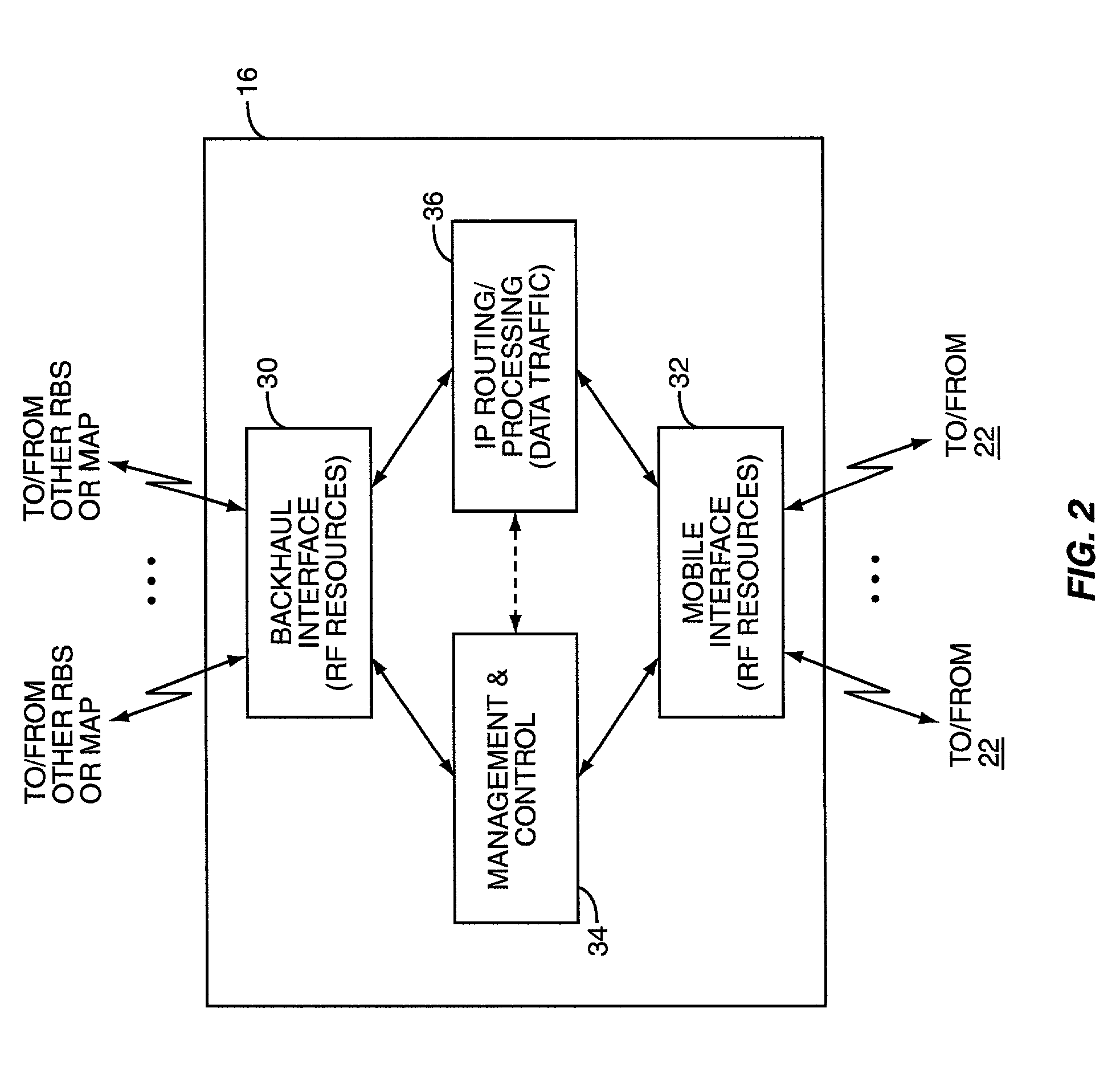Radio access network with meshed radio base stations
a radio access network and radio base station technology, applied in the field of wireless communication systems, can solve the problems of poor limited use, and small coverage of other areas, and achieve the effect of avoiding congested rbss, and reducing the number of base stations
- Summary
- Abstract
- Description
- Claims
- Application Information
AI Technical Summary
Benefits of technology
Problems solved by technology
Method used
Image
Examples
Embodiment Construction
[0014]FIG. 1 illustrates a radio access network (RAN) generally referred to by the numeral 10. The network 10 comprises a base station controller (BSC) 12, a network manager 14, one or more radio base stations (RBSs) 15 of a first type, a plurality of RBSs 16 of a second type forming a mesh network 18, and one or more mesh attachment points (MAPs) 20. The RAN 10 permits users of mobile terminals 22 to communicate with other mobile terminal users, and with users of communication devices or services associated with a Public Switched Data Network (PSDN) 24, such as the Internet, PSTN, or some combination thereof, which is accessible to the RAN 10 through a mobile switching center (MSC) 26.
[0015]In the context of the following discussion, it is assumed that the RAN 10 is a packet data network and that the MSC 26 has packet data switching capability. As such, communication between the mobile terminals 22 and the RAN 10 is also packet based, providing any number of services, such as Web b...
PUM
 Login to View More
Login to View More Abstract
Description
Claims
Application Information
 Login to View More
Login to View More - R&D
- Intellectual Property
- Life Sciences
- Materials
- Tech Scout
- Unparalleled Data Quality
- Higher Quality Content
- 60% Fewer Hallucinations
Browse by: Latest US Patents, China's latest patents, Technical Efficacy Thesaurus, Application Domain, Technology Topic, Popular Technical Reports.
© 2025 PatSnap. All rights reserved.Legal|Privacy policy|Modern Slavery Act Transparency Statement|Sitemap|About US| Contact US: help@patsnap.com



